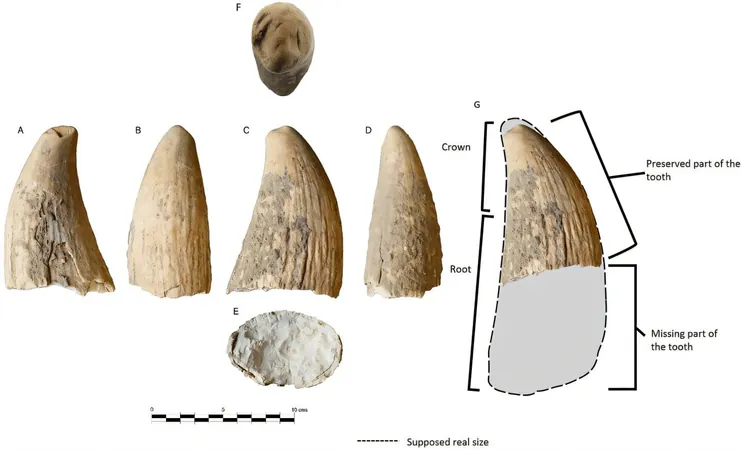
Unveiling the Ancient: The First Sperm Whale Tooth from 3rd Millennium Iberia
2025-07-18
Author: Nur
A Remarkable Discovery in Valencina de la Concepción
In an extraordinary find, a team of researchers led by Dr. Samuel Ramírez-Cruzado Aguilar-Galindo has unveiled the first-ever sperm whale tooth from the 3rd millennium on the Iberian Peninsula, discovered at the ancient mega-site of Valencina de la Concepción-Castilleja de Guzmán, near Seville, Spain.
Unearthing History During Library Construction
The Valencina site has been a focal point for archaeological exploration since the discovery of La Pastora, a tholos-type megalithic monument. Recent excavations in 2018 revealed a treasure trove of artifacts, including pottery, stone tools, and — most remarkably — a large 13.2 cm sperm whale tooth.
Clues of an Ancient Life
Dr. Ramírez-Cruzado Aguilar-Galindo noted that the tooth belonged to an older sperm whale, identifiable through distinct wear marks and a fracture suggesting it was damaged during the whale's lifetime. Taphonomic analysis indicated that the tooth had an adventurous past: after the whale's death, it likely rested on the sea floor, enduring scavenging by sharks and colonization by marine life.
From Ocean Floor to Ritual Significance
After being uncovered from the sediment through intense natural events like storms, the tooth was further altered by human activity — its lower half was meticulously removed, suggesting it was sought after for its importance.
Cultural Significance of Large Animals in Neolithic Society
In Neolithic Europe, large animal remains, often found in special pits without human bodies, were revered as ritualistic deposits. Evidence from Valencina indicates that such large animals held significant social value and were perhaps included as grave goods for notable individuals.
A Link to the Past with Deep Connections
Dr. Ramírez-Cruzado Aguilar-Galindo speculates that the communities of the time not only recognized the whale tooth but may have shared stories about these majestic sea creatures. He points to similar finds in nearby Portugal, where sperm whale bones were crafted into artifacts, highlighting a rich cultural exchange.
Significance of the Discovery
This exceptional discovery is not just a singular finding; it marks a historic moment as the only sperm whale tooth from the Neolithic-Chalcolithic period discovered in archaeological contexts across Europe. It parallels another recently found tooth in Monte d'Accoddi, illustrating the reverence ancient societies had for these formidable marine giants.
Conclusion: A Glimpse into Ancient Reverence
Dr. Ramírez-Cruzado Aguilar-Galindo affirms the profound importance of these finds, stating, "Both teeth were unearthed from significant, almost sacred sites, underscoring the value placed on these remarkable relics by ancient societies." This discovery opens a window into the past, shedding light on the connections between humans and nature in a time long gone.



 Brasil (PT)
Brasil (PT)
 Canada (EN)
Canada (EN)
 Chile (ES)
Chile (ES)
 Česko (CS)
Česko (CS)
 대한민국 (KO)
대한민국 (KO)
 España (ES)
España (ES)
 France (FR)
France (FR)
 Hong Kong (EN)
Hong Kong (EN)
 Italia (IT)
Italia (IT)
 日本 (JA)
日本 (JA)
 Magyarország (HU)
Magyarország (HU)
 Norge (NO)
Norge (NO)
 Polska (PL)
Polska (PL)
 Schweiz (DE)
Schweiz (DE)
 Singapore (EN)
Singapore (EN)
 Sverige (SV)
Sverige (SV)
 Suomi (FI)
Suomi (FI)
 Türkiye (TR)
Türkiye (TR)
 الإمارات العربية المتحدة (AR)
الإمارات العربية المتحدة (AR)